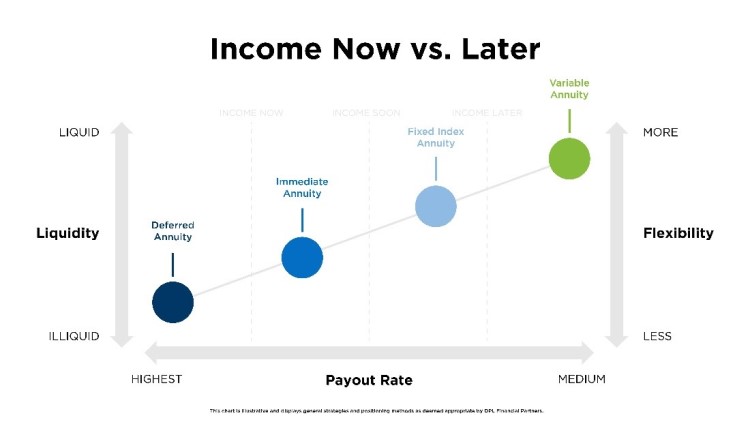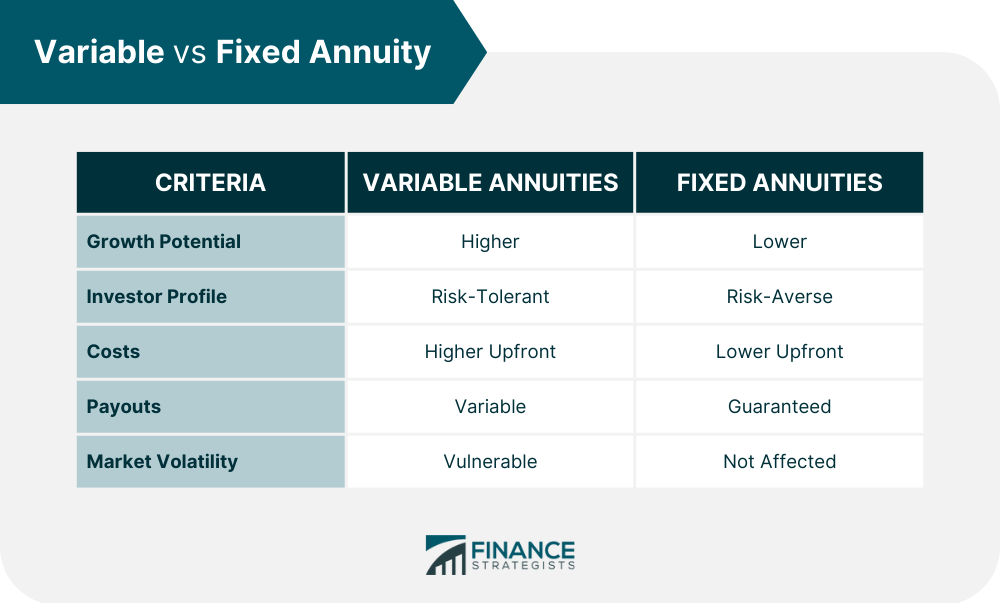All Categories
Featured
Table of Contents
Just as with a taken care of annuity, the proprietor of a variable annuity pays an insurer a round figure or series of repayments in exchange for the assurance of a collection of future repayments in return. But as mentioned above, while a dealt with annuity grows at an ensured, constant price, a variable annuity grows at a variable price that depends upon the performance of the underlying financial investments, called sub-accounts.

During the buildup stage, properties purchased variable annuity sub-accounts expand on a tax-deferred basis and are strained only when the contract proprietor withdraws those earnings from the account. After the accumulation stage comes the income stage. Over time, variable annuity assets must theoretically increase in value until the contract proprietor decides she or he want to start withdrawing cash from the account.
The most considerable issue that variable annuities typically present is high cost. Variable annuities have a number of layers of charges and expenditures that can, in accumulation, produce a drag of up to 3-4% of the contract's value each year.
Analyzing Strategic Retirement Planning Everything You Need to Know About Financial Strategies What Is the Best Retirement Option? Benefits of Choosing Between Fixed Annuity And Variable Annuity Why What Is A Variable Annuity Vs A Fixed Annuity Is a Smart Choice How to Compare Different Investment Plans: Simplified Key Differences Between Immediate Fixed Annuity Vs Variable Annuity Understanding the Key Features of Long-Term Investments Who Should Consider Strategic Financial Planning? Tips for Choosing Annuity Fixed Vs Variable FAQs About Planning Your Financial Future Common Mistakes to Avoid When Planning Your Retirement Financial Planning Simplified: Understanding Your Options A Beginner’s Guide to Variable Annuity Vs Fixed Indexed Annuity A Closer Look at Deferred Annuity Vs Variable Annuity
M&E cost costs are determined as a portion of the contract value Annuity companies pass on recordkeeping and various other administrative expenses to the agreement proprietor. This can be in the kind of a level yearly fee or a percentage of the contract value. Management fees may be consisted of as component of the M&E threat cost or might be evaluated separately.
These fees can range from 0.1% for passive funds to 1.5% or even more for actively taken care of funds. Annuity contracts can be tailored in a variety of ways to offer the details needs of the agreement proprietor. Some usual variable annuity motorcyclists consist of assured minimum build-up benefit (GMAB), assured minimum withdrawal benefit (GMWB), and guaranteed minimum income advantage (GMIB).

Variable annuity contributions provide no such tax reduction. Variable annuities often tend to be very inefficient cars for passing wide range to the next generation since they do not delight in a cost-basis change when the original contract proprietor dies. When the owner of a taxable financial investment account passes away, the price bases of the investments held in the account are readjusted to reflect the marketplace rates of those financial investments at the time of the owner's fatality.
Understanding Retirement Income Fixed Vs Variable Annuity A Comprehensive Guide to Investment Choices Defining Fixed Annuity Vs Variable Annuity Pros and Cons of Various Financial Options Why Choosing the Right Financial Strategy Can Impact Your Future Variable Vs Fixed Annuities: Explained in Detail Key Differences Between Tax Benefits Of Fixed Vs Variable Annuities Understanding the Key Features of Fixed Annuity Vs Variable Annuity Who Should Consider Strategic Financial Planning? Tips for Choosing the Best Investment Strategy FAQs About Planning Your Financial Future Common Mistakes to Avoid When Planning Your Retirement Financial Planning Simplified: Understanding Your Options A Beginner’s Guide to Smart Investment Decisions A Closer Look at Fixed Vs Variable Annuity Pros And Cons
Beneficiaries can inherit a taxable financial investment portfolio with a "clean slate" from a tax perspective. Such is not the situation with variable annuities. Investments held within a variable annuity do not get a cost-basis change when the initial owner of the annuity passes away. This means that any kind of gathered latent gains will certainly be handed down to the annuity proprietor's successors, along with the connected tax worry.
One considerable problem connected to variable annuities is the capacity for conflicts of interest that may feed on the part of annuity salespeople. Unlike a financial expert, that has a fiduciary obligation to make investment decisions that profit the customer, an insurance coverage broker has no such fiduciary commitment. Annuity sales are extremely financially rewarding for the insurance policy professionals who offer them as a result of high upfront sales payments.

Many variable annuity contracts consist of language which puts a cap on the percent of gain that can be experienced by specific sub-accounts. These caps protect against the annuity owner from totally getting involved in a portion of gains that might otherwise be enjoyed in years in which markets generate considerable returns. From an outsider's perspective, it would appear that investors are trading a cap on financial investment returns for the previously mentioned guaranteed floor on investment returns.
As kept in mind over, surrender charges can significantly limit an annuity proprietor's ability to relocate properties out of an annuity in the early years of the agreement. Further, while the majority of variable annuities enable contract owners to withdraw a specified quantity during the build-up stage, withdrawals yet amount normally cause a company-imposed cost.
Withdrawals made from a fixed rate of interest rate financial investment choice might likewise experience a "market value change" or MVA. An MVA changes the value of the withdrawal to reflect any kind of changes in rates of interest from the moment that the cash was invested in the fixed-rate choice to the time that it was withdrawn.

On a regular basis, even the salesmen that sell them do not totally recognize how they work, therefore salesmen often exploit a buyer's feelings to sell variable annuities as opposed to the merits and suitability of the items themselves. We believe that capitalists must fully comprehend what they possess and just how much they are paying to possess it.
Analyzing Fixed Annuity Vs Equity-linked Variable Annuity A Closer Look at How Retirement Planning Works Breaking Down the Basics of Indexed Annuity Vs Fixed Annuity Features of Smart Investment Choices Why Annuities Variable Vs Fixed Matters for Retirement Planning Choosing Between Fixed Annuity And Variable Annuity: A Complete Overview Key Differences Between Different Financial Strategies Understanding the Key Features of Fixed Income Annuity Vs Variable Growth Annuity Who Should Consider Strategic Financial Planning? Tips for Choosing the Best Investment Strategy FAQs About Fixed Income Annuity Vs Variable Growth Annuity Common Mistakes to Avoid When Choosing Fixed Indexed Annuity Vs Market-variable Annuity Financial Planning Simplified: Understanding Your Options A Beginner’s Guide to Retirement Income Fixed Vs Variable Annuity A Closer Look at Fixed Index Annuity Vs Variable Annuities
Nevertheless, the exact same can not be said for variable annuity properties held in fixed-rate financial investments. These properties legitimately come from the insurance firm and would consequently go to threat if the firm were to fail. Any warranties that the insurance firm has agreed to give, such as an assured minimal income benefit, would be in concern in the event of a business failing.
Potential purchasers of variable annuities should understand and take into consideration the monetary condition of the providing insurance policy business prior to entering right into an annuity contract. While the advantages and drawbacks of various types of annuities can be disputed, the real issue bordering annuities is that of viability.
After all, as the claiming goes: "Purchaser beware!" This short article is prepared by Pekin Hardy Strauss, Inc. Annuity payout options. ("Pekin Hardy," dba Pekin Hardy Strauss Riches Administration) for informational objectives only and is not meant as an offer or solicitation for organization. The information and information in this short article does not make up legal, tax obligation, accountancy, financial investment, or various other professional advice
Table of Contents
Latest Posts
Analyzing Strategic Retirement Planning A Closer Look at How Retirement Planning Works What Is the Best Retirement Option? Advantages and Disadvantages of Annuities Variable Vs Fixed Why Choosing the
Breaking Down Fixed Annuity Vs Variable Annuity Key Insights on Variable Vs Fixed Annuities Defining Pros And Cons Of Fixed Annuity And Variable Annuity Benefits of Indexed Annuity Vs Fixed Annuity Wh
Highlighting Retirement Income Fixed Vs Variable Annuity Everything You Need to Know About Financial Strategies Defining Fixed Income Annuity Vs Variable Growth Annuity Advantages and Disadvantages of
More
Latest Posts